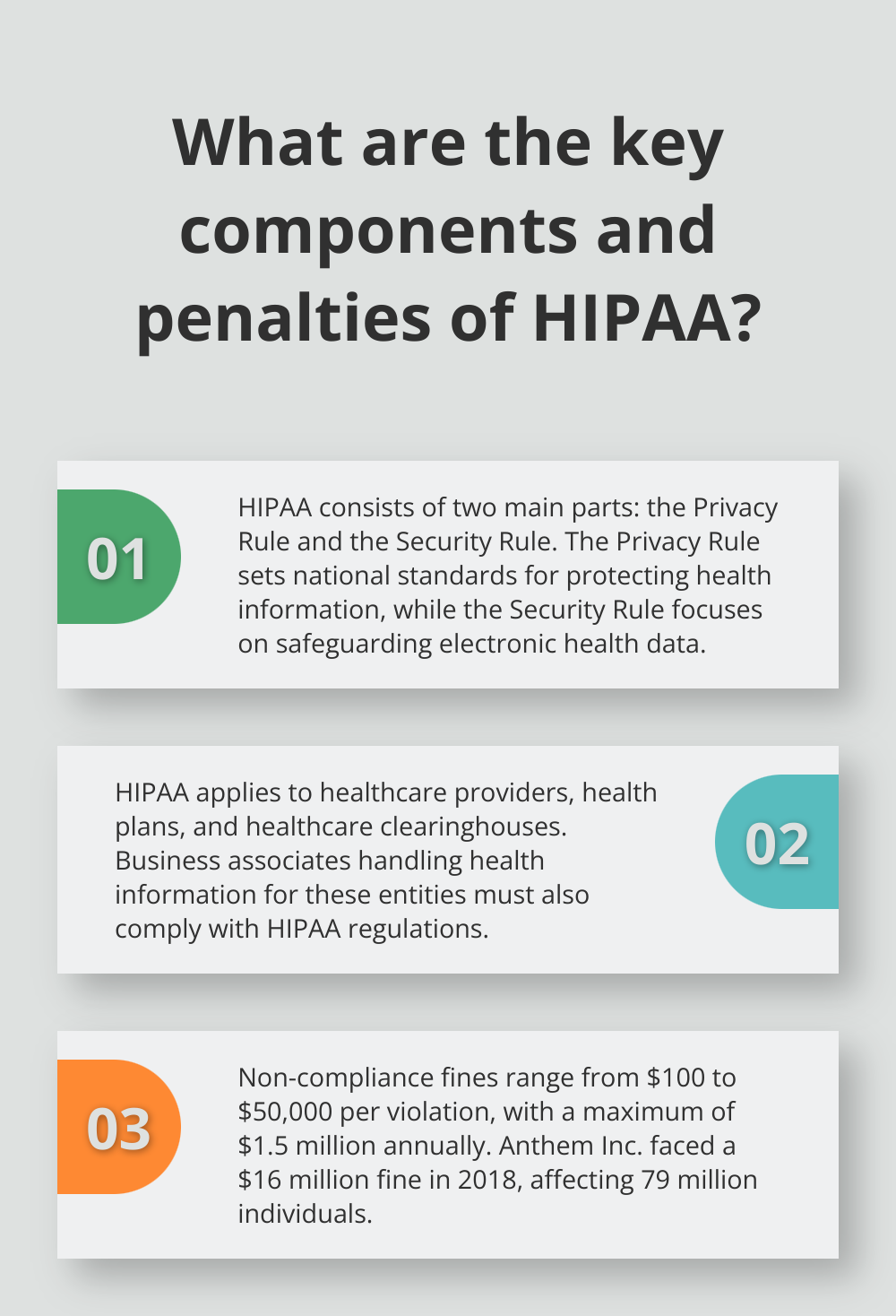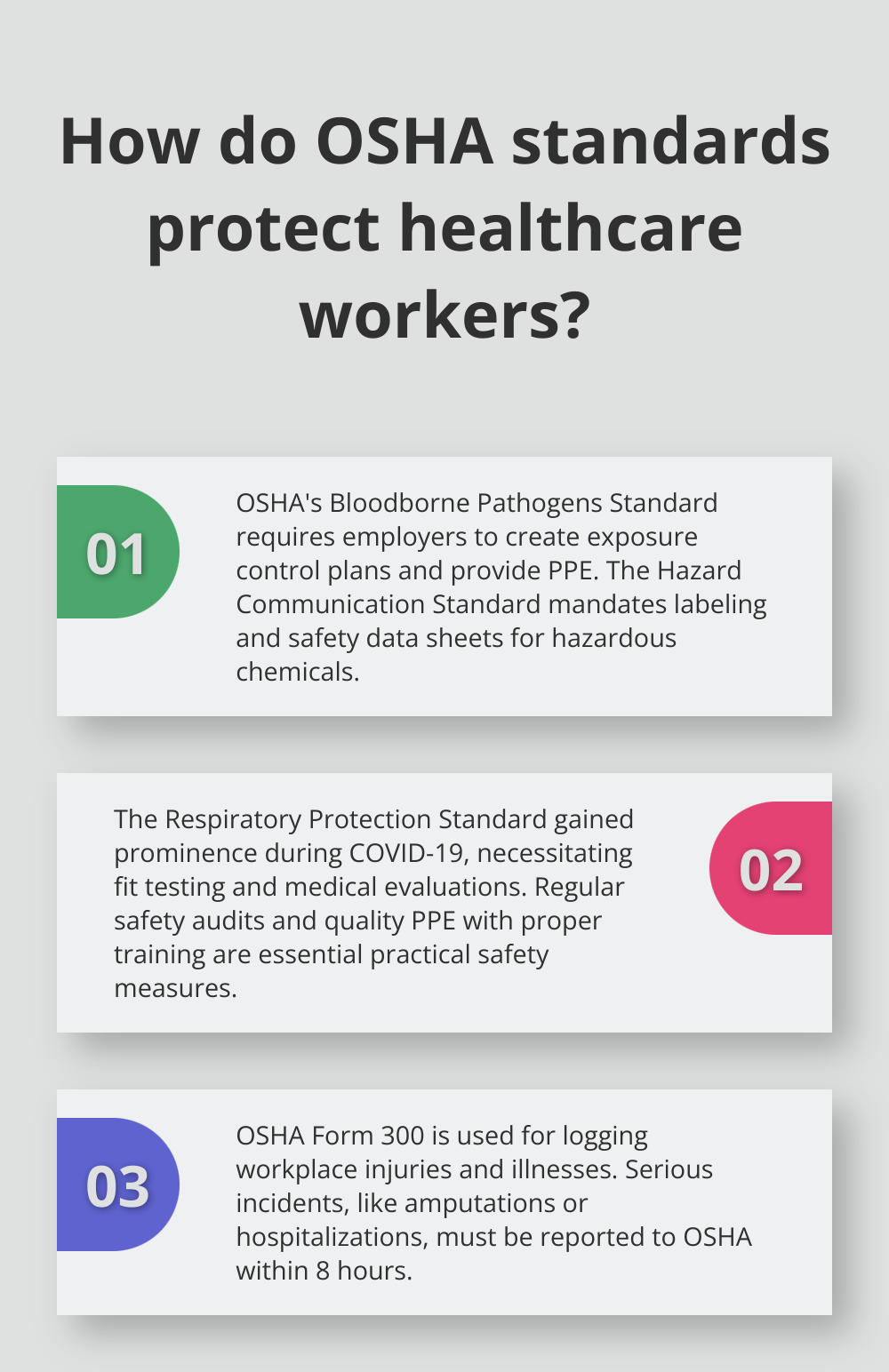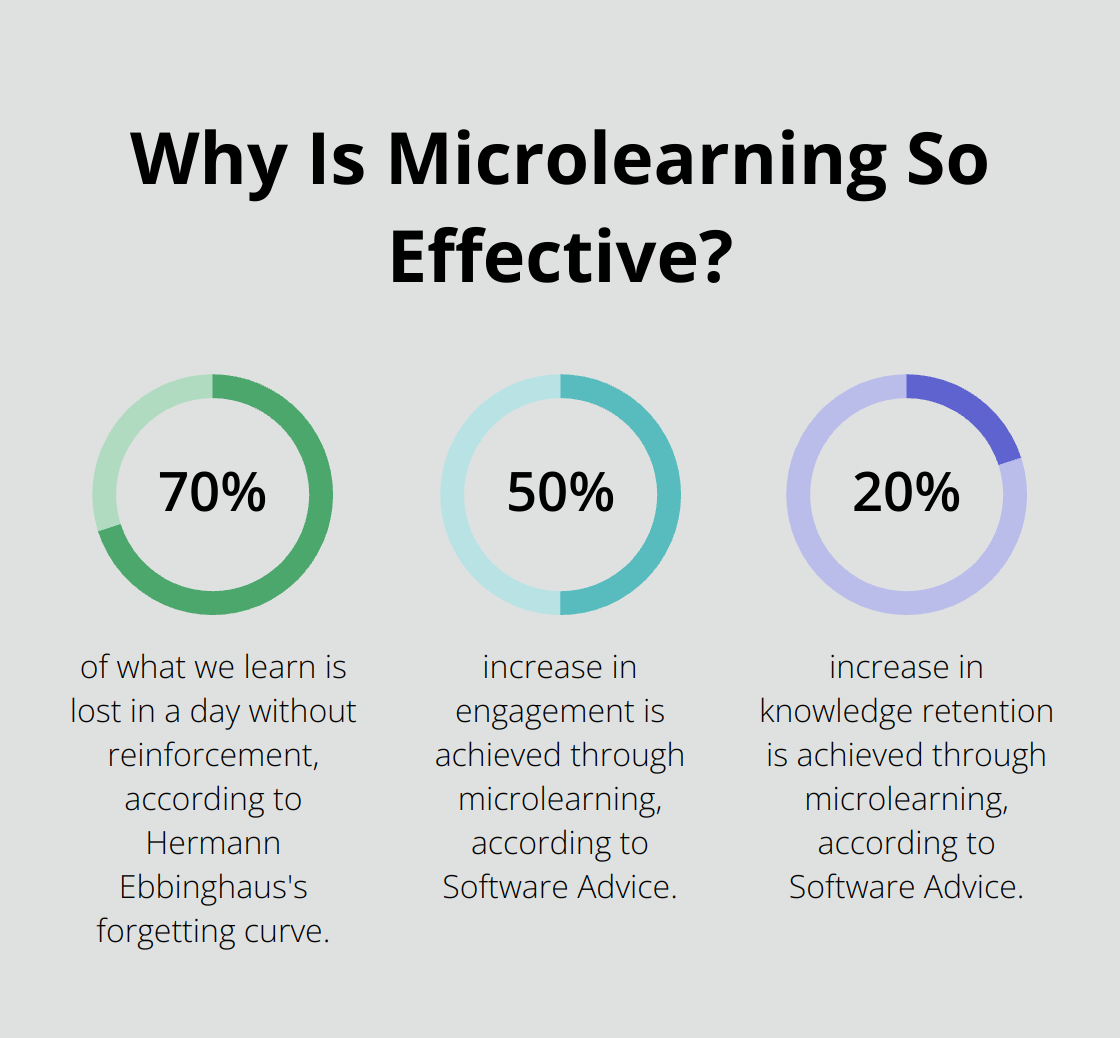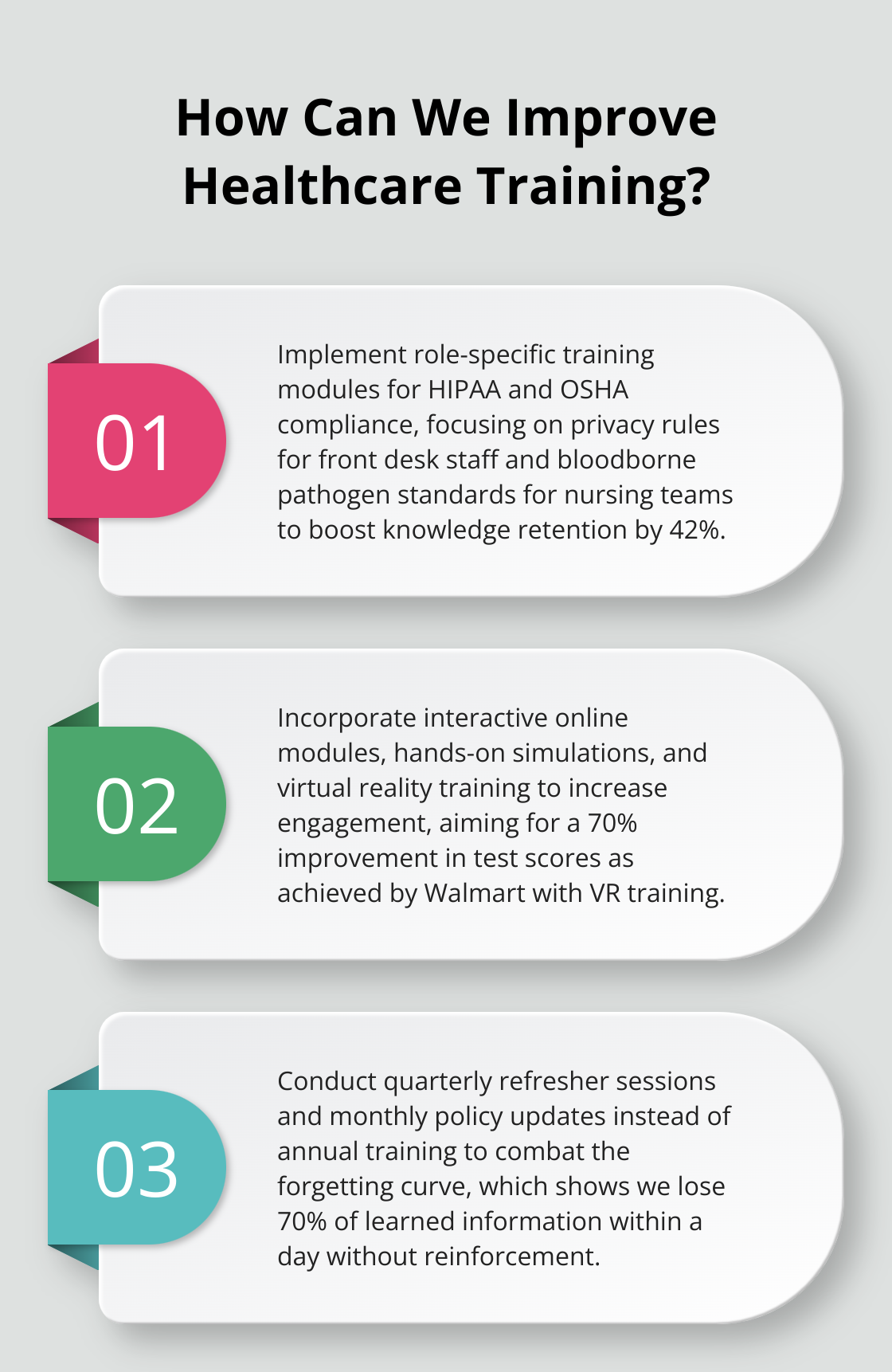HIPAA and OSHA compliance training… the double whammy every healthcare organization loves to hate. It’s like there’s a secret club for acronyms. Anyway, this stuff is crucial if you want to keep patient privacy under lock and key and make sure nobody gets hurt on the job (because lawsuits — not fun).
Now, over at ScriberJoy, we get it — these regulations? A tangled mess. Their impact on daily operations? Massive. But don’t worry, this guide is like your cheat sheet to cracking the code. We’ll break it down nice and easy, spotlight key aspects, and dish out practical insights so you can set up killer training programs. Think best practices, think valuable resources — all aimed at keeping your healthcare environment not just compliant, but secure.
Understanding HIPAA: The Foundation of Patient Privacy
What is HIPAA and Why It Matters
HIPAA … yeah, the Health Insurance Portability and Accountability Act (check it out here if you’re curious: link) … is the backbone of patient privacy in the U.S. Its main gig? Drawing the line on when and how your health info can be tossed around. This isn’t just about locking up medical files; it’s about keeping the trust alive with your doc.
The Core Components of HIPAA
HIPAA-think of it as a two-part harmony:
- The Privacy Rule: National standards? Yep, it sets those for shielding your health info. Covers everyone from your doc’s office to the insurance folks.
- The Security Rule: Laser-focused on keeping electronic health info (that means digital) under wraps.
Who Must Comply with HIPAA?
HIPAA doesn’t play favorites. It’s a who’s who list of:
- Healthcare providers
- Health plans
- Healthcare clearinghouses
And wait-there’s more! Business associates, aka companies handling your health info for these guys, need to follow suit. We’re talking transcription folks, billing services, even some software savants.
The Price of Non-Compliance
Ignore HIPAA and … ouch. Fines range from $100 to a whopping $50,000 per slip-up (with a staggering cap at $1.5 million for the repeat offenders). Consider Anthem Inc.’s painful $16 million lesson in 2018, impacting 79 million folks. It’s not just the money; your reputation could take a nosedive too.
Practical Steps for HIPAA Compliance
- Conduct regular risk assessments: Sniff out weak spots in your systems.
- Implement strong access controls: Unique IDs, tough passwords, and why not throw in multi-factor authentication?
- Encrypt sensitive data: Lock it down whether it’s sitting around or on the go.
- Train your staff: Keep the HIPAA rules fresh in their minds.
- Have a breach response plan: Be ready to act if the unthinkable happens.

Cracking the HIPAA code might feel like climbing Everest, but it’s a must for patient privacy. Stick around-the next bit dives into OSHA and how it shapes up workplace safety in healthcare.
OSHA in Healthcare: Safeguarding Workers
Understanding OSHA Standards
OSHA regulations – they’re the backbone of keeping healthcare workers safe from the daily grind of hazards. At the forefront, you’ve got the Bloodborne Pathogens Standard – it’s not just a rule; it’s THE rule. Employers need to whip up an exposure control plan and provide PPE like it’s non-negotiable. And then there’s the Hazard Communication Standard – mandatory labeling, safety data sheets, the whole deal. It’s like having a cheat sheet for hazardous chemicals.

COVID-19 threw the Respiratory Protection Standard into the spotlight. Fit testing, medical evaluations – if workers need to wear respirators, it’s not a suggestion, it’s a must.
Practical Safety Measures
Building a safety culture? It ain’t just about playing by the rules. It’s about living in front of the curve. Start with regular safety audits – take a walk through the place like a sharpshooter, spotting trip hazards or chemicals chilling where they shouldn’t be.
Investing in quality PPE? Essential. But let’s not kid ourselves – just having it is only part of the equation. You’ve got to train the crew on how to actually use it. Set up PPE stations with idiot-proof instructions (videos too, why not?) to get folks using it right.
Ergonomics – yes, that thing people usually ignore – it’s a big deal in healthcare. Roll out a safe patient handling program to battle musculoskeletal injuries. It might involve some nifty lifting gadgets and teaching folks the right moves.
Reporting and Recordkeeping Requirements
Those OSHA recordkeeping requirements? Pain in the neck but totally necessary. Keep logs of workplace injuries and illnesses – OSHA Form 300 is your friend. Serious stuff goes down (like an amputation, or someone’s in the hospital), you’ve got a strict clock – report to OSHA within 8 hours for fatalities.
Switch to a digital recordkeeping system – it’s going to save you headaches by the dozen, cut down errors left and right. Plus, many of these systems are great for spotting trends in workplace injuries – meaning you can fix issues before they become crises.
Training and Education
Winning at OSHA compliance is all about killer training programs. Get everyone clued up on potential hazards, the ultimate safety procedures, and their rights under OSHA. Regular refreshers? Non-negotiable to keep safety top of mind.
Think about a mentorship program – seasoned staff giving new folks the lowdown on safety practices. This isn’t just about playing it safe; it’s cultivating a culture of constant growth and reinforcing the safety mandate.
Continuous Improvement
OSHA compliance isn’t a trophy you put on the shelf – it’s a journey, not a destination. Regularly reassess and tweak your safety protocols. Keep the door wide open for employee input on safety concerns and betterment ideas. This collaborative method doesn’t just crank up safety; it amps up employee morale and engagement too.
As we shift gear from safety practices to all-encompassing compliance training, it becomes crystal clear: OSHA and HIPAA regulations are the dynamic duo in healthcare operations. Up next, we’ll dive into crafting and deploying effective training programs that keep both in check, guaranteeing a balanced approach to compliance in healthcare.
How to Create Effective Compliance Training
Tailor Your Training
Here’s a no-brainer – generic training programs tank. Healthcare compliance isn’t a one-size-fits-all game. Different people, different focus. So, that guy at the front desk? He should be all about HIPAA’s privacy rules. Meanwhile, nursing teams? They need to drill down on OSHA’s bloodborne pathogen standards.

The American Society for Training & Development did the math – tailored training boosts knowledge retention by 42% over generic ones. Bam! So, yeah, role-specific training? Kind of a big deal.
Diversify Training Methods
Endless PowerPoint slides? Snoozefest. Think interactive online modules, hands-on simulations, virtual reality – get in the game. Take a page from Walmart’s playbook; they pumped up their test scores by 70% with VR.
How about microlearning? Tiny, digestible learning bites of 3-5 minutes max. They crank up engagement by 50% and knowledge retention by 20% (thanks, Software Advice). Boom.
Implement Regular Training Sessions
Once-a-year training? Pfft. Not gonna cut it in this whirlwind healthcare world. How about quarterly refreshers and monthly policy updates?
Remember the forgetting curve? Thanks, Hermann Ebbinghaus, for showing us we lose 70% of what we learn in a day without reinforcement. Fight that brain drain with regular, spaced-out sessions.
Measure and Improve
You gotta keep tweaking. Pre and post-training assessments – see what sticks. Crunch the numbers: completion rates, time on modules, real-world use.
Case study: new HIPAA training module. Check out the reported privacy incidents. If those numbers dip, high five! If not, reassess, tweak, repeat.
Foster a Culture of Compliance
Compliance training – it’s not just ticking boxes. It’s about instilling a culture that seeps into every nook and cranny of your organization. Promote open chats about compliance issues. Shout out employees who nail compliance best practices. This isn’t just about dodging fines – it’s about lifting your organization’s integrity. Winning!
Final Thoughts
Let’s rap about what keeps the healthcare train on the tracks – HIPAA and OSHA compliance training. This is the bedrock of keeping everything safe and sound (and by everything, I mean your patients and your practice). A workforce that knows its compliance game is your front-line armor against those pesky pitfalls – think better patient care, think less liability. The gurus out there – industry associations, government sites, training platforms – they’ve got the goods to keep you in the know on regulations that seem to change faster than my Wi-Fi connection at a conference.

And hey, at ScriberJoy – we get it. Compliant documentation isn’t just important; it’s everything. Our medical transcription software is like the Avengers of AI and human expertise – ensuring your paperwork is HIPAA-tight. But dig this, compliance isn’t a one-and-done deal; it’s a living, breathing commitment.
So, throw your hat in the ring with solid training programs – the kind that evolve with the times. Make compliance second nature – like riding a bike, not a chore. Your patients will thank you (and so will your staff and, let’s not forget, the bottom line). Embrace the compliance game – it’s a win-win-win.

Leave a Reply
You must be logged in to post a comment.